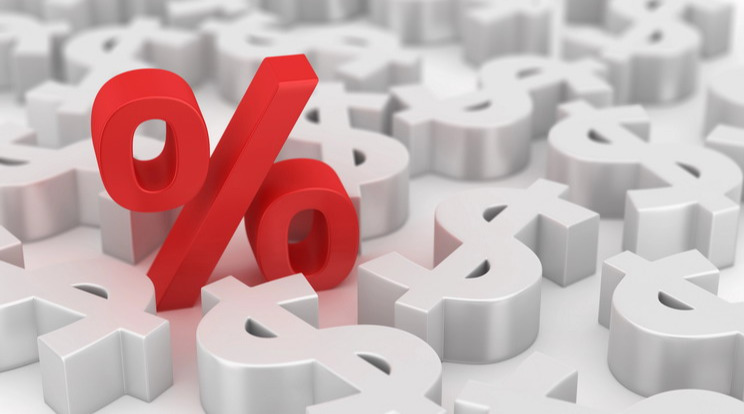7 Insights with Topic: US Treasury
While the market is focused on the size of the fiscal stimulus emerging from the Two Sessions currently underway in Beijing, there are other important drivers that could shape the outlook for the relative performance of Chinese equities versus US stocks. The first is about relative valuation; the second is cyclical – that is, the turning of the US economic cycle; and the third is secular – that is, the sustainability of the repeated use of the “policy bazooka” in the US. In this article, our Senior Advisor Say Boon Lim discusses what causes the underperformance of US market since the Inauguration of President Trump, and diversification out of the US equities has become more important than ever while the slump in consumer confidence and potential debt crisis continue to add downward pressures on the US economy.
Mar 09, 2025
US equities sentiment is now maximum bullish despite great policy uncertainties – altogether posing considerable risk to late-cycle momentum chasers. The US economy had barely cooled down before it was stimulated by 100 basis points in rate cuts in just three months from September 2024. The cuts started just when the US economy was rebounding. More importantly, they came after US inflation started picking up again. In fact, the US stock market is now in the grip of “Trumpian euphoria” because market expects the incoming administration will likely be supportive of even stronger growth, through more debt and deficits and extreme economic nationalism. The imminent risk now is that the US will have to pay more for its borrowings despite its dominance of the global debt market. This is not about other countries bypassing the Dollar in trade. It is about inflation – which will likely be worsened by President-elect Trump’s inflationary policies – and the term premia. In this article, our Senior Advisor Say Boon Lim discusses why US equities are in a bubble, drivers behind the Trumpian Euphoria 2.0, and that the stubborn or even revived inflation are credible risks in 2025.
Dec 24, 2024
The time has come – Federal Reserve chair Jerome Powell finally signalled that rate cuts will likely start in Sep at Jackson Hole, though his remarks offered few clues as to how the Fed might proceed after its Sep gathering. On the surface, extending duration in US Treasuries appears to be a straightforward decision given the assumption that falling interest rates will lead to rising bond prices. However, it is not without risks and complexity as we are entering the rate cut cycle against very different backdrop from previous cycles. In this article, we discuss the intricacies of the upcoming rate cut trajectory, and why US Treasury Floating Rate Notes (FRNs) remains a relevant strategy for investors seeking diversification and stability as a result of the very much inverted yield curve, and market uncertainties in this journey.
Aug 28, 2024
Global markets have hit extremes in sentiment – extreme exuberance towards the US and Japan and extreme pessimism about China. That sentiment has in part been driven by straight line projections of the cycle – the expectation that the US will continue its current path towards “Goldilocks” and Japan can sustain its currency depreciation-led earnings growth. The risks are that the cycle in the US transitions not to “Goldilocks” but to recession, and Japan’s Yen depreciation/reflation cycle cannot be sustained without dangerous inflation and ultimately government debt consequences. For China, the extreme in pessimism is predicated on the assumption that China cannot escape its cyclical weakness of the last 12 months, notwithstanding its ample policy “ammunition”.
Dec 18, 2023
From “Goldilocks” to “Nightmare on Wall Street” – the convergence of structural and cyclical forces looks set to inflict a lot more damage on US assets. For some time now, we had been warning about the upside risks to US Treasury yields. That slow, upward creep in US Treasury yields recently turned into a rampage, with nasty implications for both US bonds and equities. Meanwhile structural factors are further feeding the rise in UST yields – more supply, less demand. In this article, our Senior Advisor Say Boon Lim discusses about the great refinancing pressure of US government debt looming, how a lot of stuff could “break” if funding costs keep going up – including US banks – and how things may play out if the structural factors are dominant, a cyclical economic downturn may not necessarily bring down funding costs.
Oct 19, 2023
The US Treasury’s recent – and ongoing – dash for cash highlights the economy’s enormous fiscal challenges. To quote Bloomberg: “The barrage of fresh Treasury bills poised to hit the market over the next few months is merely a prelude of what’s yet to come: a wave of longer-term debt sales that’s seen driving bond yields even higher. Sales of government notes and bonds are set to begin rising in August, with net new issuance estimated to top USD 1 trillion in 2023 and nearly double next year to fund a widening deficit.” On top of that, according to calculations by asset manager Horizon Kinetics and as quoted by gold fund manager Incrementum, the US will have to refinance around half of its national debt of more than USD 35 trillion by 2025. That’s a lot of debt maturities to digest in two years. In this article, our Senior Advisor Say Boon Lim cautions that even if Fed rates stabilise, the longer-term outlook for US Treasury yields would likely remain risky as persistent deficits drive up debt relative to GDP, in turn driving interest payments as a percentage of GDP up “vertically”. Indeed, the Congressional Budget Office is warning of the “risk of a fiscal crisis”.
Jul 24, 2023
Big, long-term trends could drive Developed Market bond yields much higher than the cyclical peaks that the market is currently pricing in. There are cycles and there are secular trends. If the super cycle of rates and yields has turned – off deep negative inflation-adjusted levels – then the lesser cycles could mean- revert a lot higher around long-term uptrends. And we are at this juncture at the moment, as the negative yielding bonds have literally disappeared - the global stock of negative yielding bonds had gone from a peak of US$18.4 trillion late in 2020 to zero recently. What are the true implications behind this abrupt turn of tides? In this article, our Senior Advisor Say Boon Lim discusses the big drivers for potentially much higher rates and yields for this year, and areas we are spending a lot more time monitoring, as the longer-term outlook could be far worse than just a mean reversion in nominal rates and yields as we may also be in the midst of a secular mean reversion in real government bond yields and corporate credit yields.
Jan 17, 2023







